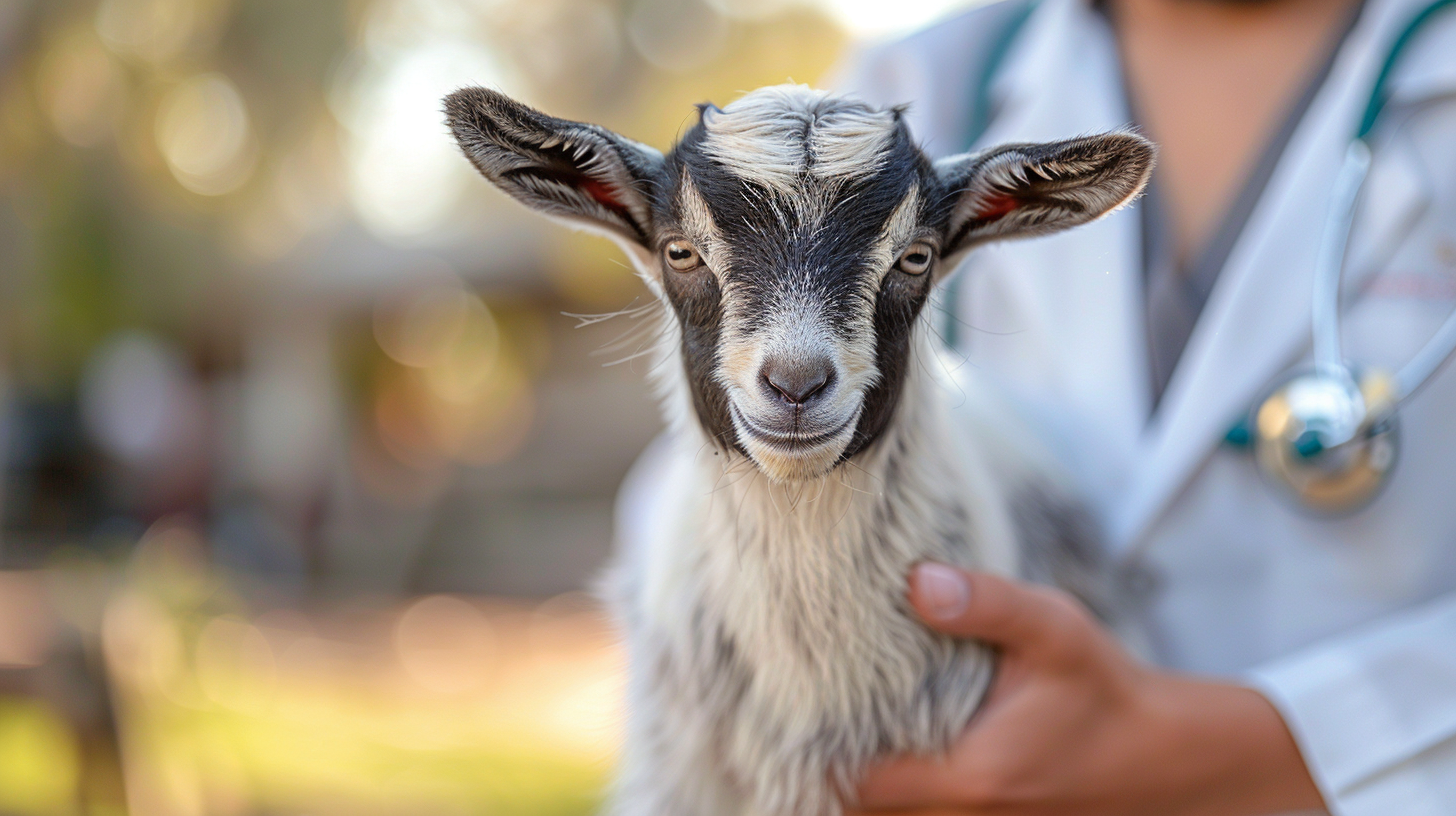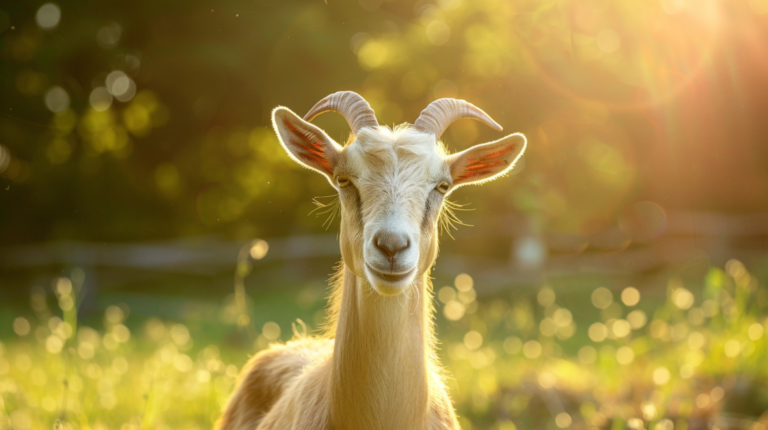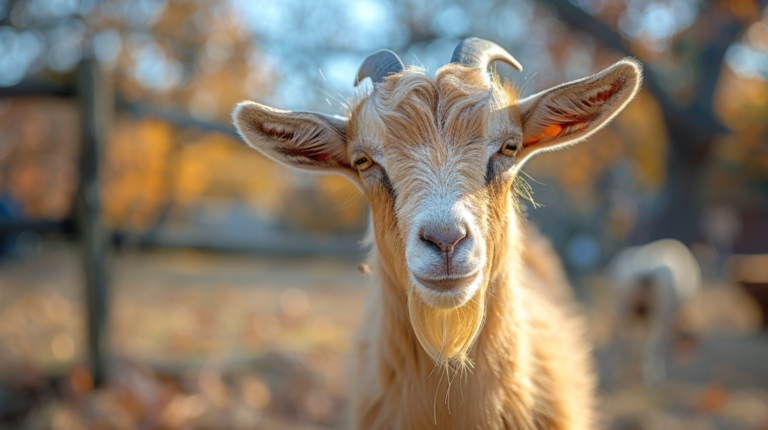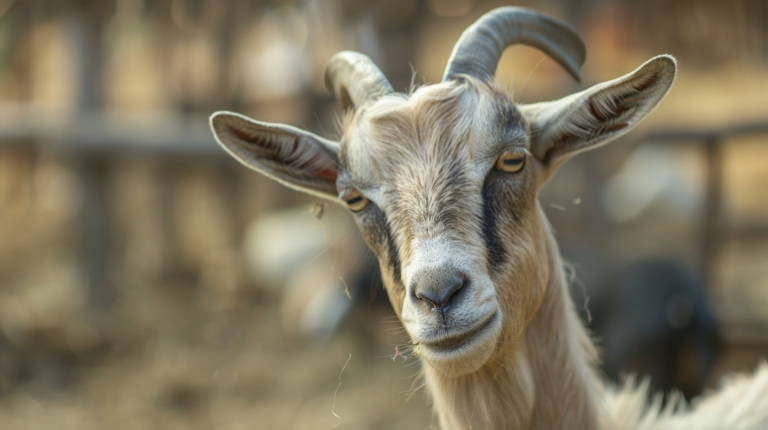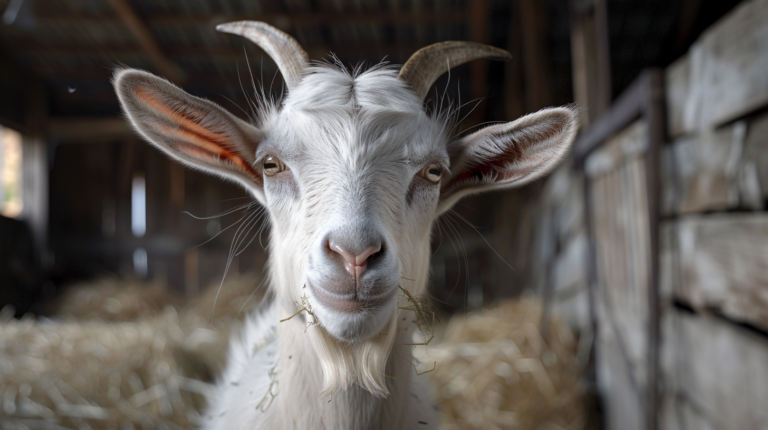Discover the 10 critical signs of Johne’s Disease in Goats. Learn symptoms, testing methods, and prevention strategies to protect your herd’s health and wellbeing.
Table of Contents
If you’re a goat owner, understanding Johne’s Disease in Goats is crucial for maintaining your herd’s health and preventing devastating economic losses. This chronic, progressive infection affects the small intestine and can silently spread through your entire herd before symptoms become apparent. Unlike many other livestock diseases, Johne’s disease presents unique challenges that require early detection and comprehensive management strategies.
Johne’s disease (pronounced “yo-knees”) is an infection of the small intestine that affects cattle, sheep, goats, and other ruminants (hoofed animals). The disease is caused by Mycobacterium avium subspecies paratuberculosis (MAP), a hardy bacterium that can survive in the environment for extended periods, making it particularly challenging to control once established in a herd.
This comprehensive guide will explore the 10 most critical signs of Johne’s disease in goats, helping you identify potential cases early and implement effective prevention strategies. Whether you’re a new goat owner or an experienced farmer, understanding these symptoms of Johne’s disease in goats could save your animals’ lives and protect your investment.
What is Johne’s Disease in Goats?
Johne’s disease is a contagious, chronic, sometimes fatal infection that primarily affects the small intestine of ruminants. In goats, this disease presents differently than in cattle, often making diagnosis more challenging. The infection typically occurs in young kids during their first few months of life, but clinical signs may not appear for years, creating a dangerous window where infected animals can spread the disease throughout the herd.
The causative agent, MAP, is an extremely resilient bacterium that can survive in soil and water for up to a year. The bacteria that causes Johne’s disease can survive for up to a year in the environment, contaminating pastures. This environmental persistence makes Johne’s disease particularly difficult to eradicate once it becomes established in a farming operation.
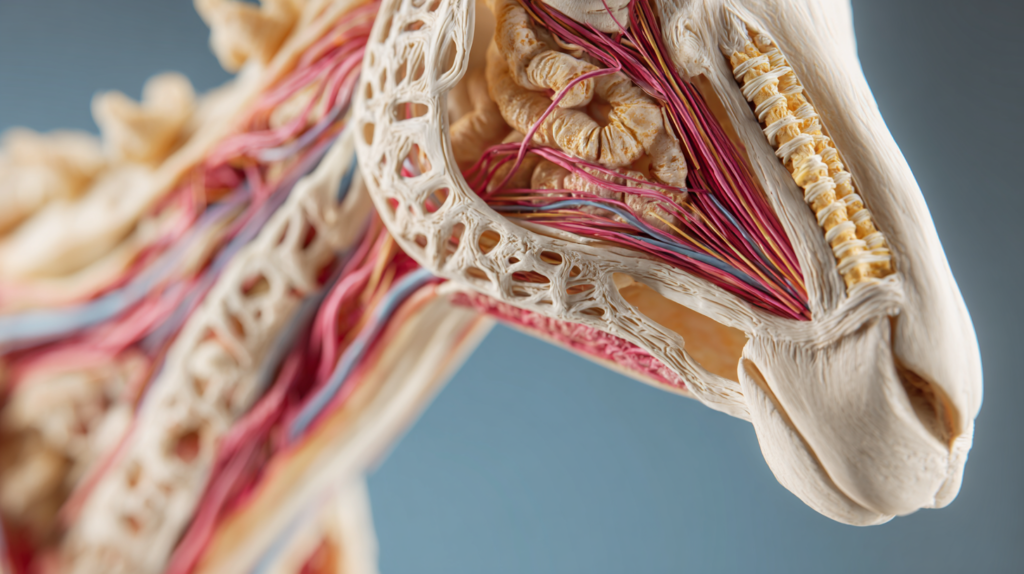
The Economic Impact
Johne’s disease represents one of the most significant economic threats to goat farming operations worldwide. Infected animals experience reduced milk production, poor reproductive performance, and ultimately death, leading to substantial financial losses. Additionally, the disease can affect property values and limit marketing opportunities, as many buyers now require negative test results before purchasing animals.
| Critical Sign | Description | Stage | Severity Level |
|---|---|---|---|
| Chronic Diarrhea | Persistent watery diarrhea that doesn’t respond to standard treatments | Clinical | Advanced |
| Progressive Weight Loss | Gradual loss of body condition despite normal appetite | Clinical | Advanced |
| Decreased Milk Production | Significant drop in milk yield in lactating does | Clinical | Advanced |
| Rough Hair Coat | Dull, coarse, and unkempt appearance of the coat | Early Clinical | Moderate |
| Lethargy | Reduced activity levels and general weakness | Clinical | Advanced |
| Intermittent Fever | Periodic elevation in body temperature | Early Clinical | Moderate |
| Bottle Jaw (Submandibular Edema) | Fluid accumulation under the jaw due to protein loss | Clinical | Advanced |
| Decreased Appetite | Gradual reduction in feed intake | Clinical | Advanced |
| Muscle Wasting | Loss of muscle mass, particularly over the back and hindquarters | Clinical | Advanced |
| Reproductive Issues | Reduced fertility, increased breeding failures | Subclinical/Clinical | Moderate |
10 Critical Signs of Johne’s Disease in Goats
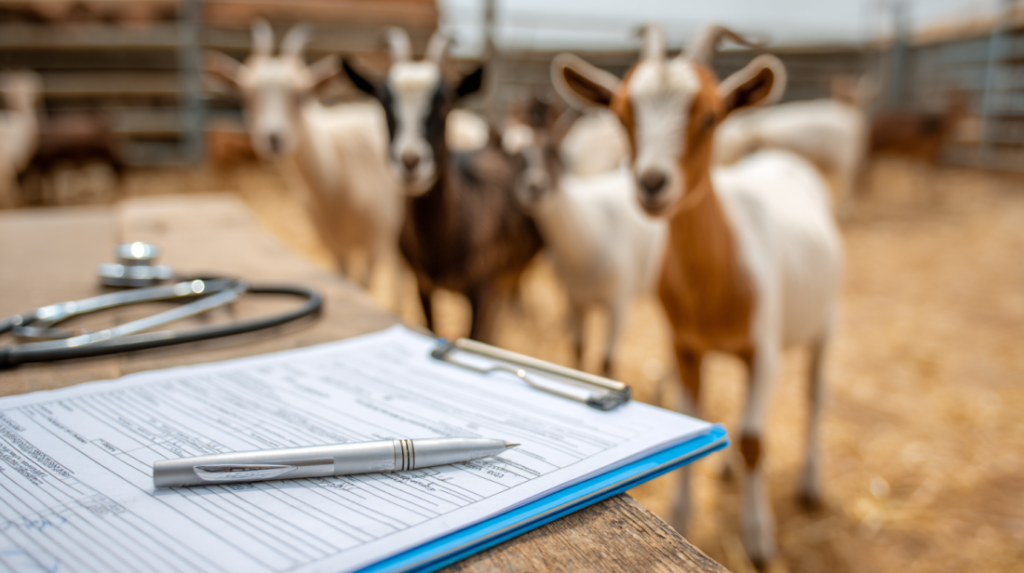
1. Chronic Weight Loss Despite Good Appetite
The most consistent clinical sign in sheep and goats is chronic weight loss despite a good appetite. This is perhaps the most distinctive symptom of Johne’s disease in goats. Unlike other wasting diseases, affected animals continue to eat normally while steadily losing weight over weeks or months.
Key characteristics:
- Gradual, progressive weight loss
- Maintained or even increased appetite
- Loss of body condition score over time
- Visible ribcage and hip bones becoming prominent
What to watch for: Record weekly weights for your goats, especially older animals. A consistent downward trend in weight despite adequate nutrition should raise immediate concerns about Johne’s disease.
2. Intermittent Soft or Pasty Stools
While diarrhea is a hallmark of Johne’s disease in cattle, goats present differently. In goats, diarrhea is less common than in cattle. Instead, you may notice intermittent soft or pasty stools that come and go over time.
Important distinctions:
- Stools may be soft and pasty rather than liquid
- Diarrhea may only occur in terminal stages
- Consistency varies from normal to soft throughout the day
- Soft pasty stool and/or profuse diarrhea were observed only after several weeks of illness, in the terminal stages of the disease
3. Weakness and Lethargy
Clinical signs were mainly those of a chronic wasting disease which lead to emaciation, severe weakness, prostration and death. As the disease progresses, infected goats become increasingly weak and lethargic.
Observable signs:
- Reluctance to move or join the herd
- Decreased activity levels
- Lying down more frequently
- Difficulty standing after lying down
- Slower movement when walking
4. Poor Hair Coat and Skin Condition
Goats with Johne’s Disease in Goats , often develop a poor hair coat as their body condition deteriorates. The coat may become dull, rough, or patchy, reflecting the animal’s declining nutritional status despite adequate feed intake.
Visual indicators:
- Dull, lackluster hair coat
- Rough or coarse hair texture
- Patchy areas of hair loss
- Dry, scaly skin
- Loss of the healthy shine typical of well-nourished goats
5. Decreased Milk Production
In dairy goats, Johne’s Disease in Goats , can significantly impact milk production. Even before obvious clinical signs appear, infected does may show reduced milk yield, affecting both quantity and quality.
Production impacts:
- Gradual decline in daily milk output
- Reduced lactation periods
- Changes in milk composition
- Increased somatic cell counts
- Earlier cessation of lactation
6. Submandibular Edema (Bottle Jaw)
Some goats with advanced Johne’s Disease in Goats , develop submandibular edema, commonly known as “bottle jaw.” This swelling under the jaw occurs due to protein loss and poor absorption of nutrients.
Clinical appearance:
- Soft, fluid-filled swelling under the jaw
- Swelling may extend to the throat area
- Typically painless to touch
- May fluctuate in size
- Often indicates advanced disease
7. Behavioral Changes
Infected goats may exhibit subtle behavioral changes that alert observant owners to potential health issues. These changes often occur gradually and may be the first signs noticed by attentive caretakers.
Behavioral indicators:
- Isolation from the herd
- Reduced social interaction
- Changes in feeding behavior
- Increased time spent lying down
- Decreased responsiveness to stimuli
8. Poor Reproductive Performance
Affected animals usually show sign before they are 1 year of age. However, reproductive issues may be among the first signs noticed in breeding animals.
Reproductive problems:
- Reduced conception rates
- Increased embryonic loss
- Smaller litter sizes
- Weak or underweight kids
- Longer intervals between pregnancies
9. Stunted Growth in Young Animals
Young goats infected with MAP may show signs of stunted growth or failure to thrive, even when provided with adequate nutrition and care.
Growth indicators:
- Slower weight gain compared to herd mates
- Smaller body size for age
- Delayed sexual maturity
- Poor body condition despite good feed
- Reduced growth rates throughout development
10. Chronic Poor Body Condition
The overall body condition of Johne’s Disease in Goats deteriorates progressively. Despite continuing to eat well, infected goats soon become emaciated and weak.
Body condition signs:
- Visible ribs and spine
- Prominent hip bones
- Sunken appearance around the eyes
- Loss of muscle mass
- Overall emaciated appearance
| Strategy Category | Prevention Method | Implementation Details | Priority Level |
|---|---|---|---|
| Biosecurity | Closed Herd Management | Maintain a closed herd system, avoiding introduction of new animals when possible | High |
| Testing | Incoming Animal Testing | Test all new animals before introduction using fecal PCR or ELISA | High |
| Colostrum Management | Heat-Treated Colostrum | Feed kids heat-treated colostrum (60°C for 60 minutes) from tested dams | High |
| Environmental | Clean Kidding Areas | Maintain clean, dry kidding environments and separate kids immediately | High |
| Testing | Annual Herd Testing | Test all breeding animals over 24 months annually using recommended protocols | Medium |
| Management | Cull Test-Positive Animals | Remove confirmed positive animals promptly to prevent spread | High |
| Nutrition | Proper Feed Storage | Store feed properly to prevent contamination and maintain nutritional quality | Medium |
| Environmental | Pasture Management | Rotate pastures and avoid overcrowding to reduce environmental contamination | Medium |
| Record Keeping | Detailed Health Records | Maintain comprehensive records of testing, treatments, and health status | Low |
| Education | Staff Training | Train all farm personnel on Johne’s disease prevention protocols | Medium |
Diagnostic Testing for Johne’s Disease in Goats
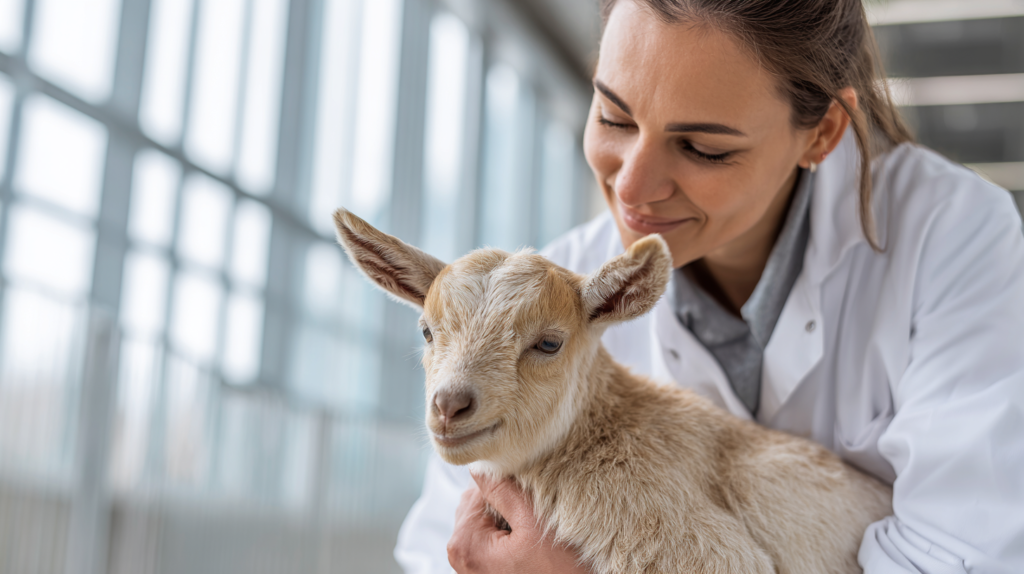
Early and accurate diagnosis is crucial for managing Johne’s Disease in Goats herds. Our recommended test for screening for MAP infection in clinical or non-clinical goats is the Johne’s fecal PCR test.
Available Testing Methods
Fecal PCR Testing
- Most accurate method available
- Highly sensitive and specific in shedding animals
- More expensive but provides reliable results
- Recommended for screening programs
Blood/Serum ELISA Testing
- Less expensive than fecal PCR
- May miss early infections
- Maternal antibodies may complicate interpretation of serum antibody tests prior to 4-6 months of age
- Useful for herd screening
Fecal Culture
- Traditional gold standard
- Time-consuming (several months for results)
- Less commonly used due to lengthy processing time
Testing Strategies
The two common ways to test a herd for Johne’s Disease in Goats are: direct PCR on fecal samples (the most accurate, but most expensive method), and tests on blood or milk samples for antibodies made by the animal in response to MAP infection.
Recommended approach:
- Risk-based testing: Focus on older animals or those showing suspicious signs
- Whole herd screening: Test all animals over 24 months of age
- New animal testing: Test all incoming animals before introduction
- Regular monitoring: Implement annual testing protocols
Prevention and Management Strategies
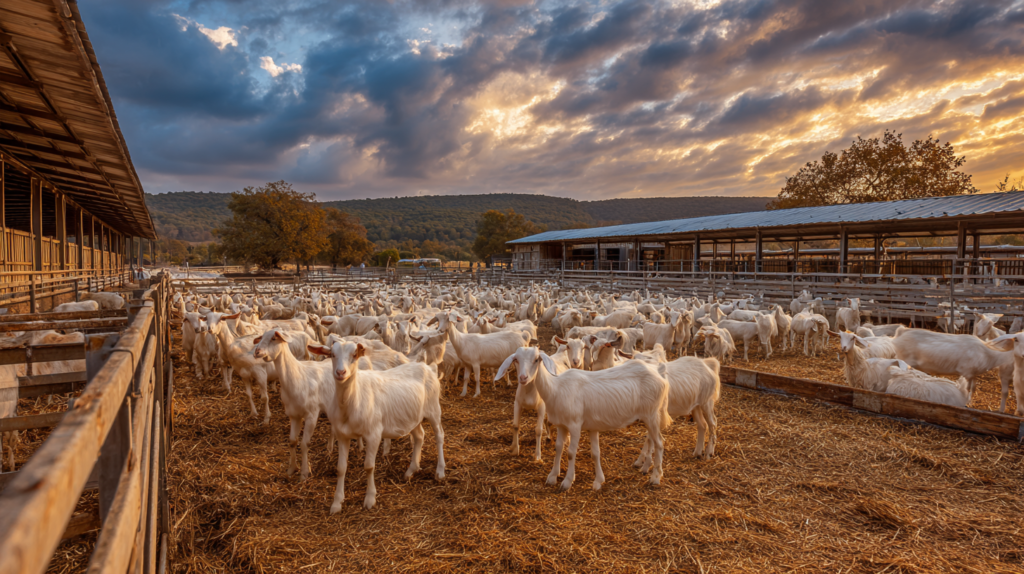
Preventing Johne’s Disease in Goats is far more effective and economical than treating infected herds. Johne’s disease can be controlled in goat herds. Find the infection as soon as possible, keep good records, and make sure the goat kids have no chance to swallow MAP-contaminated milk, colostrum, hay or water.
Critical Control Points
1. Biosecurity Measures
- Maintain closed herds when possible
- For herds that are not infected, managers should take precautions against introduction of Johne’s Disease in Goats. Such precautions include keeping a closed herd or requiring that replacement animals come from test-negative herds
- Quarantine new animals for at least 90 days
- Test all incoming animals before introduction
2. Colostrum and Milk Management
- Use only colostrum from test-negative does
- Consider pasteurization of colostrum if disease is present
- Separate kids from infected mothers immediately
- Use milk replacer when necessary
3. Environmental Management
- Maintain clean, dry housing conditions
- Prevent fecal contamination of feed and water
- Regular cleaning and disinfection of facilities
- Proper manure management and disposal
4. Nutritional Support
- Provide adequate nutrition to support immune function
- Ensure proper mineral supplementation
- Maintain body condition scores
- Monitor feed quality and storage
Herd Management Protocols
Record Keeping
- Maintain detailed health records for all animals
- Track test results and dates
- Document clinical signs and treatments
- Record breeding and production data
Culling Decisions
- Remove test-positive animals from the herd
- Consider culling offspring of positive animals
- Evaluate economic impact of retention versus removal
- Follow veterinary recommendations for management
Treatment and Prognosis
| Timeline Phase | Diagnostic Method | Accuracy Level | Treatment Options | Prognosis |
|---|---|---|---|---|
| Early Infection (0-2 years) | Fecal PCR Testing | Moderate | No curative treatment | Subclinical, may remain asymptomatic |
| Early Infection (0-2 years) | ELISA Blood Test | Low | No curative treatment | May not show positive results |
| Active Shedding (2-4 years) | Fecal PCR Testing | High | Supportive care, nutritional support | Progressive disease development |
| Active Shedding (2-4 years) | Fecal Culture | High | Anti-inflammatory medications | Bacterial shedding confirmed |
| Clinical Disease (3-5 years) | Clinical Examination | High | Palliative care, comfort measures | Advanced symptoms present |
| Clinical Disease (3-5 years) | ELISA Blood Test | High | Fluid therapy for dehydration | Antibody response detectable |
| Advanced Disease (4-6 years) | Histopathology | High | Quality of life assessment | Tissue damage visible |
| Advanced Disease (4-6 years) | Post-mortem Examination | High | Humane euthanasia | Terminal stage, months to live |
| Prevention Phase | Annual Herd Screening | Variable | Biosecurity measures | Early detection possible |
| Management Phase | Risk Assessment | Moderate | Herd culling decisions | Population health focus |

Unfortunately, there is no cure for Johne’s disease in goats. Once clinical signs appear, the prognosis is poor, and affected animals typically die within months. However, early detection and proper management can help control the spread within the herd.
Supportive Care
While treatment cannot cure the disease, supportive care may help maintain comfort and extend life in valuable animals:
- Nutritional support: High-quality, easily digestible feeds
- Electrolyte replacement: Address losses from diarrhea
- Anti-inflammatory medications: Reduce intestinal inflammation
- Probiotics: Support intestinal health
- Vitamin supplementation: Address deficiencies
Management of Infected Herds
When Johne’s disease is confirmed in a herd, immediate action is necessary:
- Isolation: Separate confirmed positive animals
- Testing: Screen the entire herd
- Veterinary consultation: Develop a management plan
- Biosecurity enhancement: Implement strict protocols
- Monitoring: Regular follow-up testing
Long-term Herd Health Planning

Successfully managing Johne’s Disease in Goats requires a long-term commitment to herd health planning. This includes developing comprehensive protocols for testing, biosecurity, and animal management.
Annual Health Protocols
Spring Testing Program
- Annual testing of all breeding animals
- Fecal PCR testing for high-risk animals
- Blood testing for herd screening
- Documentation of all results
Breeding Season Management
- Pre-breeding health evaluations
- Genetic selection against disease susceptibility
- Proper nutrition during gestation
- Stress reduction during breeding
Kid Management
- Immediate separation from high-risk mothers
- Colostrum testing and management
- Early weaning protocols when necessary
- Growth monitoring and health tracking
Economic Considerations
The economic impact of Johne’s Disease in Goats extends beyond immediate animal losses:
Direct Costs:
- Reduced milk production
- Increased mortality rates
- Veterinary expenses
- Testing and diagnostic costs
Indirect Costs:
- Decreased property values
- Limited marketing opportunities
- Reduced genetic progress
- Increased labor requirements
Return on Investment:
- Prevention costs versus treatment costs
- Long-term herd productivity
- Market access and certification benefits
- Reduced stress and improved welfare
Frequently Asked Questions
Everything you need to know about Johne’s Disease in Goats
For more expert pet care tips and product recommendations, visit BlithePet.com — your trusted source for pet wellness.
Conclusion
Johne’s Disease in Goats remains one of the most challenging diseases facing goat owners today. The key to successful management lies in early detection, comprehensive testing programs, and strict biosecurity measures. By recognizing the 10 critical signs outlined in this guide—from chronic weight loss despite good appetite to poor body condition—you can take proactive steps to protect your herd’s health and your farming operation’s viability.
Remember that the symptoms of Johne’s disease in goats can be subtle and easily mistaken for other conditions. Regular veterinary consultations, consistent testing protocols, and detailed record-keeping are essential components of an effective disease management program. While there is no cure for Johne’s disease, early detection and proper management can significantly reduce its impact on your herd.
The economic and emotional toll of Johne’s Disease in Goats makes prevention absolutely critical. Implementing comprehensive biosecurity measures, maintaining proper nutrition, and ensuring clean environments can help protect your goats from this devastating disease. When in doubt, consult with your veterinarian to develop a customized management plan that addresses your specific herd’s needs and risk factors.
Have a similar experience with your pet? Share it in the comments below!

